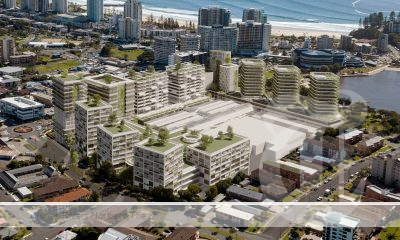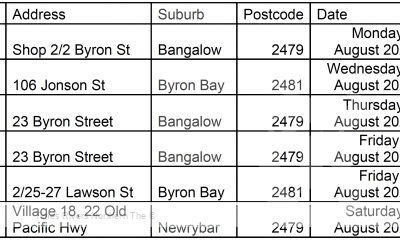The RBA explained: what we get wrong about the Reserve Bank
UNSW Sydney
How much does the public really understand about the role of the Reserve Bank of Australia? What is the role of a central bank and how much of the current economic turbulence have its policies and decisions caused – or prevented?
Amid surging interest rates and strong criticism of the outgoing Governor, Philip Lowe, the RBA has been under intense scrutiny. The incoming governor, Michele Bullock, faces acute pressure to ease the pain of higher interest rates for borrowers while constraining inflation.
The RBA’s interbank overnight cash rate target, the major influencer of retail interest rates, has surged from 0.1 per cent in April 2022 to 4.1 per cent in July 2023 and the Reserve’s recent announcement predicts an increase in Australia’s unemployment rate to 4.5 per cent by the end of next year. Large sections of the public believe it is the RBA’s responsibility to act.
In an interview, Dr Nalini Prasad, School of Economics, and Associate Professor, Mark Humphrey-Jenner, School of Banking and Finance at UNSW Business School, explore the RBA’s role.
What is the RBA?
A/Prof. Mark Humphrey: The RBA is Australia’s “central bank”. The RBA has several roles, with the primary one being price stability. This involves ensuring that inflation is neither too high nor too low, usually sitting between 2 per cent and 3 per cent.
Part of the RBA’s role is to implement its inflation-related goals through monetary policy meetings, the most common aspects of which include setting the interbank overnight cash rate, cash rate for short, and quantitative easing or tightening (i.e., buying or selling bonds in the market). This sets the rate at which banks are willing to lend to households and businesses in the economy.
What impact does the RBA have on the cost of living crisis?
A/Prof. Mark Humphrey: The RBA has a complex impact on the cost of living and might initially be seen to worsen it through higher rates. This is to reduce inflation and ease cost-of-living pressures. The aim is for this to be short-term pain for long-term gain.
Raising rates certainly increases the cost of servicing mortgages. It is often asserted that this increases rents. This is because higher rates deter construction. They also increase demand for rentals because it becomes more difficult to convince a bank you can service a loan. Thus, it can increase rental demand and decrease rental supply. The ultimate beneficiary here is the bank not the landlord, assuming the bank does not see defaults increase at least. The goal is to reduce overall spending, thereby reducing inflation.
In addition, corporations might face funding pressures as well: as capital becomes more expensive, companies will be able to borrow less, or will have to do so at less favourable terms. This slows their expenditure, which in turn should reduce inflation.
The RBA may worsen the cost of living situation for some people if unemployment increases markedly. For the impacted people, the cost of living will become significantly worse if they cannot find another job. However, the RBA is aware of this and aims to reduce such impacts as far as possible.
What impact does RBA have on homeowners?
Dr Nalini Prasad: The main way in which interest rates affect the economy is through the behaviour of people with a mortgage. When the RBA increases interest rates this increases individuals’ mortgage interest rates for those people on a variable mortgage. Individuals’ mortgage payments rise, leaving them with less money to spend on other things.
When individuals have less money to spend on other things, this reduces demand in the economy and should put downward pressure on prices. What’s interesting about the current period is that around 40 per cent of borrowers took out fixed rate mortgages during the COVID-19 period. These individuals took out loans with interest rates between 2 to 2.5 per cent which were fixed for around three years.
A lot of these fixed rate mortgages are now expiring, and these individuals are having to refinance onto home loans with interest rates between 5 to 6 per cent. This is equivalent to an $650 increase in monthly repayments for the median borrower. There are concerns that these individuals will have to cut back their consumption to meet higher interest payments on their loan. Offsetting this, households built up large savings buffers during the COVID period – this could help households meet increased interest payments without a large reduction in their spending.
What are some common misconceptions about the role and actions of the RBA?
Dr Nalini Prasad: There is a common misconception about the RBA and thinking they do not care about the public. When interest rates were low, the RBA was criticised for lowering the incomes of retirees. When interest rates are rising, like they are now, the RBA is criticised for increasing pain on mortgage holders.
The people who work at the RBA have parents or grandparents that are retirees, and many of them also have a mortgage. They understand that changing interest rates affect segments of society differently but are trying to balance all these things to keep inflation low and ensure that everyone who wants a job is able to find one.
The RBA puts a lot of thought and analysis into the decisions it makes.
A/Prof. Mark Humphrey: It is sometimes claimed that the RBA controls or influences property prices or intends to do so. This is not correct. The RBA does not specifically aim to increase or decrease house prices. House prices derive from a complex mix of supply and demand dynamics.
In addition, there are some assertions that the RBA is the only body responsible for controlling inflation. This is false. The RBA only controls monetary policy (i.e., the RBA policy interest rate). The federal government controls fiscal policy (i.e., government spending). If the government spends profligately, the RBA must then struggle to undo the damage done by the government.
How does the RBA envision the future of the Australian economy?
Dr Nalini Prasad: The RBA has indicated that it is likely to pause increasing interest rates to assess how previous interest rate increases have affected the economy. However, it’s hard to see how interest rate increases will stop while the inflation rate remains above that of the cash rate. The unemployment rate is also at historic lows which will concern the RBA as employers increase wages in order to attract staff.
The RBA will face a number of challenges besides dealing with inflation. The review into the RBA recommended changes to how the RBA operates. Some of these things will be straightforward to implement, others will be more challenging, like changing the structure of the board and allowing them to request information from RBA staff.
For more business news, click here.





 Tweed Shire News2 years ago
Tweed Shire News2 years ago
 Motoring News1 year ago
Motoring News1 year ago
 COVID-19 Northern Rivers News3 years ago
COVID-19 Northern Rivers News3 years ago
 COVID-19 Northern Rivers News3 years ago
COVID-19 Northern Rivers News3 years ago
 Northern Rivers Local News3 years ago
Northern Rivers Local News3 years ago
 Health News3 years ago
Health News3 years ago
 COVID-19 Northern Rivers News3 years ago
COVID-19 Northern Rivers News3 years ago
 NSW Breaking News3 years ago
NSW Breaking News3 years ago






















